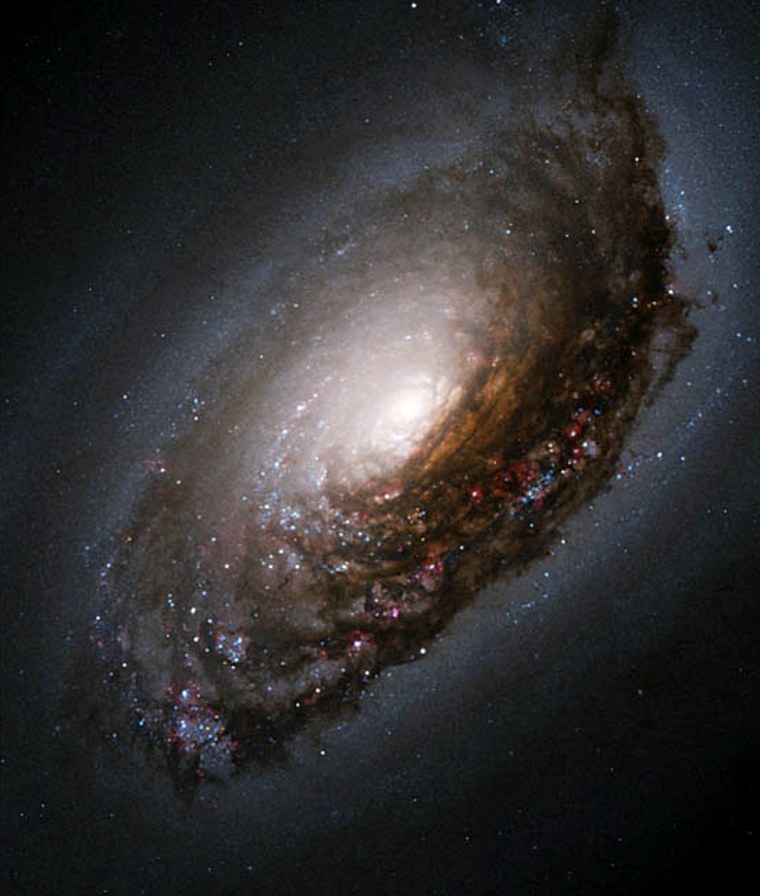The Hubble Space Telescope has returned a detailed image of the scene of a galactic collision that's given a galaxy a black eye.
At least that's how many astronomers see in M64, a strange galaxy also sometimes referred to as the Evil Eye Galaxy.
The new image, released Thursday, shows fine details of a dark band of dust that cuts across the galaxy's otherwise-bright nucleus. M64 is well-known among amateur astronomers because of its appearance in small telescopes. It was first cataloged in the 18th century by the French astronomer Charles Messier.
M64 is located in the northern constellation Coma Berenices, about 17 million light-years away.
At first glance, M64 appears to be a fairly normal pinwheel-shaped spiral galaxy, much like the Milky Way. As in the majority of galaxies, all of the stars in M64 are rotating in the same direction, clockwise as seen in the Hubble image.
But detailed studies in the 1990s led to the discovery that the interstellar gas in the outer regions of M64 rotates in the opposite direction from the gas and stars in the inner regions. Strange, indeed.
Astronomers think the oppositely rotating gas arose when M64 absorbed a satellite galaxy that collided with it, perhaps more than a billion years ago.
This small galaxy has now been almost completely destroyed, but signs of the collision persist in the backward motion of gas at the outer edge of M64.
Active formation of new stars is ongoing in this outer region where oppositely rotating gases collide, are compressed and contract, according to Hubble astronomers. Particularly noticeable in the image are hot, blue stars that have just formed, along with pink clouds of hydrogen gas that glow because they are exposed to ultraviolet light from the newly formed stars.
The data for this image were gathered in 2001.
